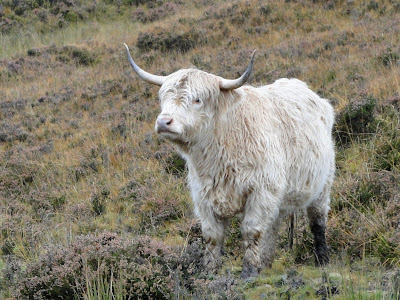I'll start with some of the things I've been up to with my students.
Earlier this month, I took my Roman Britain class to the Tower of London. Although the Tower itself dates from the 9th century, there is a nice stretch of Roman city wall on the grounds. I decided that this was a good enough reason to take them to one of my favorite places in London. The oldest building on the Tower grounds is White Tower, started by William the Conqueror after his conquest of England in 1066. The tower is probably best known as the place where Henry VIII had two of his wives executed. It's also the place where Shakespeare tells us that Richard III had two young princes killed out of fear that they would challenge his own claim to the throne. Most historians disagree, but their bones were found in White Tower.
 |
| Here are some of my students hanging out with Emperor Trajan. The bottom half of the wall you see behind them is Roman. The top part was added in Medieval times. |
 |
| This is White Tower, started by William the Conqueror after his conquest of England in 1066. Fun fact: Before he conquered England, William was known as "William the Bastard." |
On Thanksgiving morning, I took my World War II students on a tour of the HMS Belfast, which is permanently moored on the south bank of the Thames, right across the river from the Tower of London. The Belfast saw action in both World War II and Korea. Its biggest claim to fame is the role it played in sinking the German battleship Sharnhorst off the north coast of Norway in 1943. It also provided cover fire for the D-Day invasion of Normandy in 1944.
 |
| Two of my students waiting to board the Belfast. |
 |
| One of my students on the bow of the Belfast. I told him to throw that anchor overboard, but I don't think he heard me. |
I have a map of London on the wall of my room. Each time I explore a new area of the city, I trace the streets that I walked with a marker. That way, when I look at the map I can easily see places that I still need to visit. Before this month, I hadn't spent much time on London's East End. Part of the reason is that this area is on the back side of the map. The other reason is that there are not a lot of tourist attractions on that side of the city, now that the Olympics are over. A couple of things in the news this month forced me to "flip the map" and head to the East End. The first thing was Hurricane Sandy. Follow-up stories about the flooding in New York mentioned that they needed a tidal surge control system like the one in London. I had heard of the Thames Barrier, but never seen it, so I went out to take a look.
The other story in the news that drew me to the East End was that many of the venues from the Olympics were being dismantled or repurposed. I had been thinking about going out to the Olympic site since I got here, but because the Olympics were over, I didn't see any urgency. Once I heard this, I decided I had better go while there was still something to see.
Some of you have asked what I did for Thanksgiving. It was a little strange being here on such an American holiday (although I've been in foreign countries on Independence Day a couple of times). In the morning, as you already know, I toured the Belfast. In the afternoon I did a little Christmas shopping. That evening, CAPA, where I teach, threw a Thanksgiving dinner for more than 100 Americans, mostly students. The food was good, the Brits' best take on what they imagine American Thanksgiving dinner to be. There were a few things that made me laugh, but I won't spoil their good intentions with criticism. The company was also good. We taught our hosts a little about Thanksgiving, and they reciprocated with a game to see how much we've learned about British pop culture. It wasn't like being home for Thanksgiving, but it was a lot of fun.
On the morning after Thanksgiving, I headed off to Cardiff, the capital of Wales, for the weekend. (That's Caerdydd in Welsh.) As I've already mentioned, the weather was pretty bad. It rained most of the time I was there. In fact there was some pretty serious flooding in Wales and western England. Despite that, I had a really good time. I did manage to snap a few pictures in between the showers, so I'll use those to tell you a little about what I saw.
 |
| You're probably getting tired of me going on about castles all the time, but isn't this a great picture? This part of Cardiff Castle was built by the Normans after the 9th century conquest. |
 |
| This is Cardiff High Street (High Street is the equivalent of Main Street in the US). It probably won't surprise you that I found what I believe to be the best pub in Cardiff along here. |
Thanks for reading "News from London"! I hope you'll come back next week to read the long-awaited post on my favorite UK pubs and ales. (I've been "researching" that one all semester!) If you followed the link from my facebook page, you can read earlier posts by clicking the links under "Blog Archive" near the upper right-hand corner of the page. If you enjoy the blog or just want to say "hi," please leave a comment in the box below.
Cheers!
























































